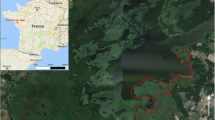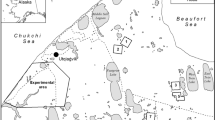Abstract
This paper examines how flooded river valley conditions affect reproductive success of Hooded Crows Corvus cornix nesting in the biotope considered as primary for this species. The main goals of the present study were to determine the nesting period that most influences the breeding output and to investigate the factors influencing reproductive efficiency of the studied population. Mean survival rate of the whole nesting period (53 days––from egg laying to fledgling) was 0.371 (95% CL: 0.338–0.403), while mean survival for the incubation period (to day 21) was 0.850 (0.827–0.875) and mean survival rate for the nestling period was 0.499 (0.460–0.538). The study has shown that the most critical period in the breeding cycle is the first half of the nestling stage, especially from hatching to day 5. Furthermore, the study demonstrated how water conditions affect reproduction in untypical wetland species. Similarly to many other waterbirds, in the studied population of the Hooded Crow, water level positively influences its reproduction.


Similar content being viewed by others
References
Begon M, Mortimer M, Thompson DJ (1996) Population ecology: a unified study of animals and plants, 3rd edn. Blackwell, London
Cezilly F, Boy V, Green RE, Hirons GJM, Johnson AR (1995) Interannual variation in greater flamingo breeding success in relation to water levels. Ecology 76:20–26
Choiński A (2000) Characterization of the water levels of the Warta river near Kostrzyn. Biol Bull Poznań 37:189–204
Chylarecki P, Kuczyński L (1999) Zusammenhang von Populationsgrsse der Wasser-und Sumpfvöel im Naturschutzgebiet Słońsk und dem Faktor Wasser. In: Ehrnsberger R, Dabert J, Błaszak C (eds) Das Naturschutzfebiet Słońsk: Pflanzen–Tiere–Hydrologie. Akarus, Poznań, pp 105–108
Cox DR (1972) Regression models and life tables. J R Stat Soc 34:187–220
Cramp S (1998) The complete birds of the Western Palearctic on CDROM. Oxford University Press, Oxford
Dallinga JH, Schoenmakers S (1987) Regional differences in the number of White Storks (Ciconia c. ciconia) in relation to food resources. Colonial Waterbirds 10:167–177
Dziewiaty K (2002) Zur Bedeutung des Deichvor und hinterlandes der Elbe als Nahrungshabitat für Weißstörche (Ciconia ciconia). Die Vogelwarte 41:221–230
Erez A, Yom-Tov Y (1995) Reproduction of Hooded Crow Corvus corone population in Israel. Ardea 83:405–409
Frederick PC, Collopy MW (1989) Nesting success of five ciconiiform species in relation to water conditions in the Florida everglades. Auk 106:625–634
Gehan EA (1965) A generalized Wilcoxon test for comparing arbitrarily singly-censored samples. Biometrika 52:203–223
Grabiński W (1996) Breeding ecology of the Hooded Crow (Corvus corone cornix) in a fish-pond habitat. Ptaki Śląska 11:5–38 (in Polish with English summary)
Grant MC, Orsman C, Easton J, Lodge C, Smith M, Thompson G, Rodwell S, Moore N (1999) Breeding success and causes of breeding failure of curlew Numenius arquata in Northern Ireland. J Appl Ecol 36:59–74
Green N, Yurlov A (1999) Body dimensions and mass of breeding and hatched Black-tailed Godwits (Limosa l. limosa): a comparison between a West Siberian and a Dutch population. J Ornithol 140:73–79
Grimmet RFA, Jones TA (1989) Important bird areas in Europe. ICBP Publication no. 9, ICBP, Cambridge
Jankowski WS (1985) Breeding biology and ecology of the Coot (Fulica atra) in different types of fish-ponds. PhD Dissertation, Department of Avian Biology, Wrocław University, Wrocław, Poland (in Polish)
Kleinbaum DG (1996) Survival analysis. Springer, New York
Krapu GI, Klett AT, Jorde DG (1983) The effect of variable spring water conditions on mallard reproduction. Auk 100:689–698
Krebs CJ (2001) Ecology: the experimental analysis of distribution and abundance, 5th edn. Benjamin Cummings, Menlo Park
Lee ET (1980) Statistical methods for survival data analysis. Lifetime Learning, Belmont
Levin AS, Gubin BM (1978) The biology of the Hooded Crow in lowlands of Ural. Tr Inst Zool Alma Ata Ser Zool 38:95–98 (in Russian)
Loman J (1977) Factors affecting clutch and brood size in the crow Corvus cornix. Oikos 29:294–301
Loman J (1980) Reproduction in population of the hooded crow Corvus cornix. Holarctic Ecol 3:26–35
Martin TE (1987) Food as a limit on breeding birds: a life-history perspective. Annu Rev Ecol Syst 18:453–487
Opermanis O, Mednis A, Bauga I (2001) Duck nests and predators: interaction, specialization and possible management. Wildl Biol 7:87–96
Osiejuk TS (1998) Breeding biology of greylag geese Anser anser in varied condition Słońsk Reserve. PhD Dissertation, Department of Animal Morphology, Adam Mickiewicz University, Poznań, Poland (in Polish)
Parker H (1985) Breeding performance and aspects of habitat selection in sub-arctic Hooded Crows Corvus corone cornix. Fauna Norveg Ser C 8:100–105
Peto R, Peto J (1972) Asymptotically efficient rank invariant procedures. J R Stat Soc 135:185–207
Picozzi N (1975) A study of the carrion/hooded crow in northeast Scotland. Br Birds 68:409–419
Pietz PJ, Krapu GL, Buhl DA, Brandt DA (2000) Effects of water conditions on clutch size, egg volume, and hatchling mass of mallards and gadwalls in the Prairie pothole region. Condor 102:936–940
Reynolds PS (1996) Brood reduction and siblicide in black-billed magpies (Pica pica). Auk 113:189–199
Richner H (1992) The effect of extra food on fitness in breeding carrion crows. Ecology 73:330–335
Sage BL (1969) Breeding biology of the coot. Br Birds 62:134–143
Sondell J (1976) Population development in the hooded crow Corvus corone cornix at Kvismaren, Narke, in 1964–1973. Var Fagelvarld 35:113–121
StatSoft (2005) STATISTICA (data analysis software system), version 7.1. www.statsoft.com
Tenovuo R (1963) Zur brutzeitlichen Biologie der Nebelkrähe (Corvus corone cornix L.) in äusseren Schärenhof Finnlands. Ann Zool Soc Vanamo 25:1–247 (in German with English summary)
Tomek T (1977) The development of thermoregulation in nestlings of the rook (Corvus f. frugilegus L.). Folia Biol 25:341–347
Tomiałojć L, Stawarczyk T (2003) The avifauna of Poland. Distribution, numbers and trends. PTPP “pro Natura”, Wrocław, Poland (in Polish with English abstracts)
Tryjanowski P, Jerzak L, Radkiewicz J (2005) Effect of water level and livestock on the productivity and numbers of breeding white storks. Waterbirds 28:378–382
Volponi S (1999) Reproduction of a newly-established population of the great cormorant in northeastern Italy. Waterbirds 22:263–273
Witkowski J (1983) Population studies of the grey-lag goose Anser anser breeding in the Barycz valley, Poland. Acta Ornithol 19:179–216
Yom-Tov Y (1974) The effect of food and predation on breeding density and success, clutch size and laying date of the crow Corvus corone. J Anim Ecol 43:479–498
Zduniak P (2006a) The prey of hooded crow (Corvus cornix L.) in wetland: study of damaged egg shells of birds. Pol J Ecol 54:491–498
Zduniak P (2006b) Breeding ecology and food of the Hooded Crow Corvus cornix in variable hydrological conditions of “Ujście Warty” National Park. PhD Dissertation, Department of Avian Biology and Ecology, Adam Mickiewicz University, Poznań, Poland (in Polish)
Zduniak P, Kuczyński L (2003) Breeding biology of the Hooded Crow Corvus corone cornix in Warta river valley (W Poland). Acta Ornithol 38:143–150
Zduniak P, Kosicki JZ, Gołdyn B (2008) Un-paint it black: avian prey as a component of the diet of nestling hooded crows Corvus cornix. Belg J Zool 138:85–89
Acknowledgments
I wish to thank Konrad Wypychowski, head of the National Park “Ujście Warty”, for his consent and support of the study and Jakub Kosicki for his unceasing help in the fieldwork. I would further like to thank Adrian Surmacki and Piotr Tryjanowski for helpful comments on the manuscript. Special thanks go to David Orwin (University of Bedfordshire) for correction of the English in the manuscript. My gratitude is due to the Regional Office for Water Management in Poznań (Regionalny Zarząd Gospodarki Wodnej w Poznaniu) and the meteorological station IMGW in Słubice for providing access to data concerning water levels and weather conditions in the study area.
Author information
Authors and Affiliations
Corresponding author
Additional information
Communicated by C. G. Guglielmo.
Rights and permissions
About this article
Cite this article
Zduniak, P. Water conditions influence nestling survival in a Hooded Crow Corvus cornix wetland population. J Ornithol 151, 45–50 (2010). https://doi.org/10.1007/s10336-009-0424-0
Received:
Revised:
Accepted:
Published:
Issue Date:
DOI: https://doi.org/10.1007/s10336-009-0424-0




